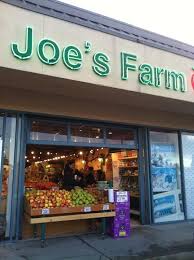
Introduction
Grocery stores serve as a cornerstone of Canadian communities, providing consumers with essential goods and services. With the ongoing effects of the COVID-19 pandemic, their role has become even more pronounced, highlighting their significance in maintaining food security and supporting local economies. Understanding the dynamics within the grocery store sector is crucial for both consumers and policymakers alike.
The Current Landscape
As of 2023, Canada’s grocery store market has shown resilience amidst global supply chain challenges. According to Statistics Canada, the retail trade in grocery stores surpassed $135 billion in 2022, reflecting a steady year-on-year growth of approximately 3.5%. The pandemic accelerated trends such as online grocery shopping, with e-commerce sales in the sector reaching $5 billion as consumers sought convenience and safety.
Major players such as Loblaws, Sobeys, and Metro dominate the market, but independent grocery stores continue to thrive, especially in rural and underserved urban areas. These smaller stores often emphasize local products, ethical sourcing, and community engagement, catering to specific neighborhood needs that larger chains might overlook.
Innovations in Grocery Shopping
Innovative approaches are reshaping the grocery shopping experience. Many retailers are integrating technology, allowing for seamless online ordering and curbside pickup options. Additionally, grocery stores are focusing more on sustainability, reducing plastic usage, and promoting locally-sourced foods, in response to increasing consumer awareness about environmental issues.
Furthermore, initiatives like food sharing programs and partnerships with local farms are gaining traction. These efforts not only reduce food waste but also bolster community relationships by connecting consumers with the food producers directly.
Conclusion
As grocery stores adapt to changing consumer behavior and market trends, their significance in Canadian society remains indisputable. They not only provide essential food supplies but also foster economic stability and community connection. The ongoing evolution of grocery stores, particularly in response to technology and sustainability concerns, indicates a forward-thinking approach that resonates with today’s consumers.
For the future, it will be vital for grocery stores to continue innovating while maintaining their role as community hubs. As we navigate the complexities of a post-pandemic world, the grocery store’s importance will undoubtedly grow, ensuring that Canadians have access to healthy and affordable food options in their neighborhoods.



